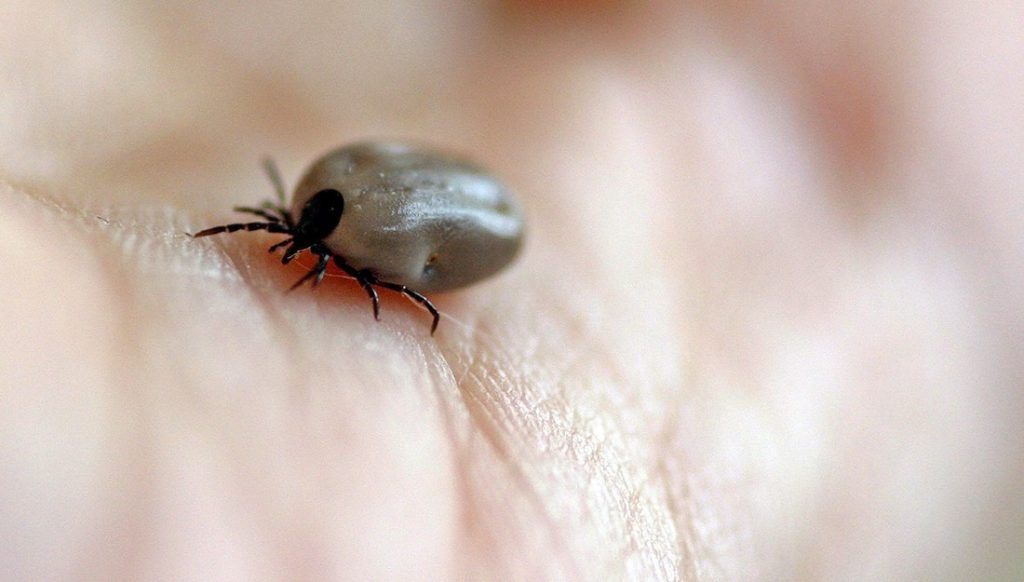How to Avoid Tick Bites and Remove Ticks
Few things ruin the enjoyment of birdwatching, camping, boating, or walking woodland trails than discovering a tick on your body, your pet or your child when you return indoors. But if you take precautions, there’s a good chance you and your closest peeps will never have to encounter one of these vile creatures.

In the U.S., the most common tick-borne disease is Lyme Disease, caused by a specific bacteria in the tick’s gut. The tick which carries Lyme disease is the Blacklegged Tick, aka the Deer Tick. The juvenile version of this tick, which is most likely to spread the disease, is only the size of a poppy seed and is not always easy to spot. The tell-tale sign of Lyme Disease infection is (but not always) a rash that looks something like a bull’s eye soon after the tick bite. An untreated Lyme disease infection can cause problems in the joints, heart and nerves, arthritis, muscle aches, and fatigue that can last for years. If you believe you’ve been infected with Lyme disease it’s very important to consult with your doctor.
Where do ticks live?
Ticks live in tall grasses, brushy areas, wooded areas, and even your backyard. You can pick up a tick at any point in the year, in areas not covered with snow. But for the most part, they’re active April-September. Unfortunately, no area of the United States is tick-free. The CDC has an excellent resource on where ticks live and tick treatments including this map of their geographic distribution.
How to avoid tick bites
- Wear long clothing that covers you entirely when going outdoors.
- Treat all of your clothing with insect repellants containing 0.5% permethrin. Some clothing and gear are already treated with permethrin when you buy them, but you can also treat your boots, camping gear, jeans, t-shirts, coats, sweatshirts, or anything with it. It remains active through several washings.
- You should also use an insect repellant on any exposed skin areas, as ticks simply love getting into the crevices under your arms, behind or in your ears, behind your knees, in your belly button, in your hair, around your waist, between your legs, and any damp, dark place. It’s good to check all of these places when coming back into the house.
- Avoid walking in high grass and brushy areas, especially those with leaf litter (the old leaves that cover the forest floor) and stick to the center of trails.
- When you’re done for the day, check your clothing for ticks and (obviously) remove any you find. A simple way to rid your clothes of any ticks is to throw them into the washing machine right away and then into the dryer for at least 10 minutes until they’re thoroughly dry. Cold and medium temp water will not kill ticks, so if you’re washing them, do it on hot.
- Check all of your gear, especially backpacks and daypacks.
- Ticks love dogs, and dogs like to shove their noses where they don’t belong. Ticks frequently latch onto dogs and cats under the fur, behind the ears and in the areas where their legs meet their bodies. Check your pets thoroughly when you bring them indoors.
- Showering as soon as you come in is a good way of doing a complete body check and wash off unattached ticks. Doing so within 2 hours of coming indoors has been shown to reduce your risk of getting Lyme Disease.
How to remove a tick
If you find a tick on your body or someone else’s don’t panic. They’re pretty easy to remove and if done within an hour or two there’s a good chance you won’t contract a disease. In fact, it takes about 36 hours for the bacteria that causes Lyme disease to spread from the tick’s gut to its salivary glands and into its host.
- Grab a pair of sharp end tweezers (not flat end) or a tick key, cotton balls, and rubbing alcohol.
- Grasp the tick with the pliers or tweezers as close to the skin as possible.
- Pull straight up SLOWLY and steadily. You’ll feel the tick tugging, trying not to let go, as its mouth parts are embedded under the skin.
- Do not crush, squeeze or break the tick while it is still attached to the skin.
- When safely removed, drop the tick into rubbing alcohol if you wish to ID it. Otherwise, destroy it by crushing it under your foot and then disposing of it in the waste.
- If the tick’s feeding parts remained in your skin, try to remove them. If you can’t, see your doctor to complete the tick removal.
More tips for avoiding tick bites:
- Wear light-colored clothing outdoors: ticks are much easier to spot on white clothing than on black.
- Tuck your pants into your socks. Yes, not a great look, but better an hour of poor fashion statement than a lifetime of Lyme disease.
- Ticks avoid dry, wide open spaces so set your lawn furniture and playground equipment back from wooded areas and on open lawn.
Remember, it’s better to be safe than sorry when it comes to ticks. Ask anyone who’s had Lyme disease.
Check out this excellent video from the University of Maine on how to remove a tick.
